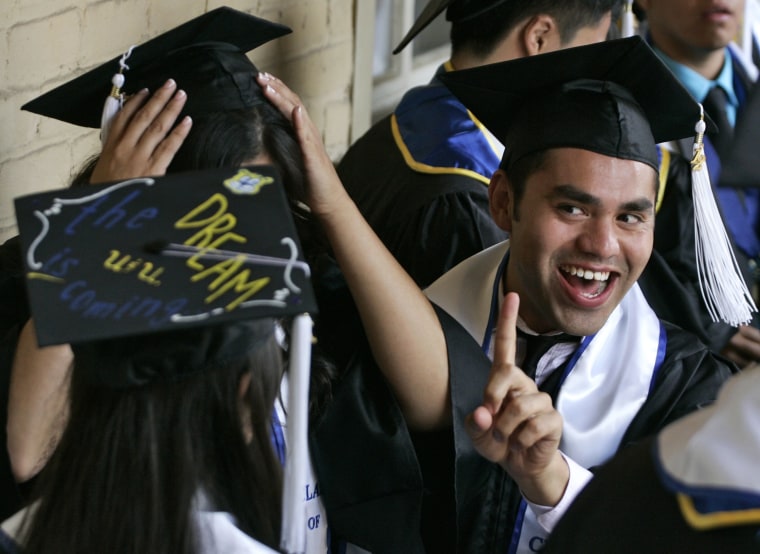Students attending Hispanic-Serving Institutions are more likely to stick with their studies than students at all other colleges and universities, even though they may have to stop and start their college careers, a report released Wednesday finds.
¡Excelencia! In Education, a non-profit focused on education and Latinos, analyzed 20 years of funding and student data from institutions with high Latino student populations, also known as Hispanic Serving Institutions or HSIs.
Their findings suggest that Latinos may be doing better when it comes to getting college educations than completion rates suggest. Those who did the analysis also say their findings point to a need to adjust how student success is measured in higher education and how to provide higher educations.
About 60 percent of all Latino college students attend HSIs. An HSI is defined as a public or private not-for-profit, degree-granting institution with 25 percent or more undergraduate, full-time equivalent Hispanic enrollment.
Latino enrollment has been increasing at colleges and universities. But the graduation rate of Latinos from higher education institutions remains below those of white and black students.
In its report, ¡Excelencia! went beyond graduation rates and looked at what it calls persistence – how long the student stayed enrolled or continued studies.
Deborah Santiago, CEO and vice president for policy at !Excelencia, said many students at HSIs stop and start, attend more than one institution and take far more than the traditional four years to graduate.
She refers to such students as post-traditional students, to avoid the negativity of non-traditonal students.
“Latino students are the poster child of post-traditional students,” she said. “This is the new norm.”
Generally, student success is tracked based on whether the student finishes in a limited time frame – six years for a four-year institution and three years for a two-year institution.
“Looking at whether students are still enrolled beyond a limited time speaks to the pathway many students are taking, especially Latino students,” she said.
At HSIs, 40 percent of students the complete their studies and obtain a degree and 15 percent "persist," compared to 56 completions and 15 percent "persistence" at all schools.
Completions at four-year HSIs are higher than two year HSIs, but persistence is almost the same. Four-year HSIs have a 51 percent completion rate and 23 percent persistence rate. At two-year HSIs, the completion rate is 34 percent and persistence is 24 percent.
“The fact they are still enrolled and going to college is still a success, but we don’t capture that in data” because students are tracked based on the traditional higher education path, Santiago said.
Students generally end up taking longer to graduate or stop and start their higher education because more than 70 percent of all students work while attending college. Many students who are the first generation to attend college also are helping family or work and family issues such as child care needs interfere.
Also, in many institutions especially in California and other large states, there are more students than there is room for students in classes they need to take to finish their college careers.
¡Excelencia¡ also reviewed how the HSIs spent federal money awarded them over 20 years. The federal government began investing in HSIs in 1995.
The review found that 70 percent of the money is spent on things tied to student success with 33 percent going to faculty and curriculum development, 26 percent to student support services and 11 percent to administrative management, Santiago said.
Santiago said the "post-traditional" way of attending college is unlikely to change soon.
"If we could get the financial aid to fully fund not just tuition and fees, but where students live while enrolled ... we would see more traditional students," Santiago said. "In lieu of that, public policy has to acknowledge and adapt to post-traditional students."

